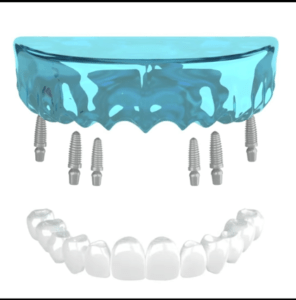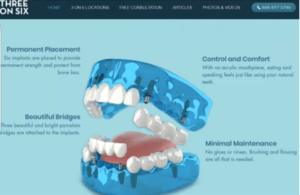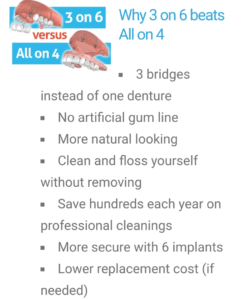by Stephen Dyson | Jul 20, 2021 | Dental Implants
Why choose Dental Implants?
. Looks like your teeth. Bone fuses to dental implants and become attached permanently.
. Comfortable, you can talk properly.
. Better Digestion, you eat better.
. Self confidence, you look years younger, it’s cheaper and better than having Botox treatment, Improves your smile
. Better Health, better chewing of food.
. Durable, combined with good oral habits, dental implants last for years
. No need to remove or place sticky adhesives on dentures all the time.
by Stephen Dyson | Jul 20, 2021 | Dental Implants
New Study states that Dental Implants may improve quality of life of women who have osteoporosis.
Women who are postmenopause and afflicted with osteoporosis, have a risk of losing their teeth.
Dental implants may be the best treatment to take according to research on cases in western reserve university school of dental medicine, this is according to associate professor of periodontics and author of Dental implants supported Restorations, Yeena Palomo; Improved quality of life in osteoprotic women.
These findings were reported in the Journal of International Dentistry.
Women who have dental implants reported the highest satisfaction in emotional and sexual areas.
by Stephen Dyson | Jul 20, 2021 | Dental Implants
Linda, California, U.S.A
The indications and versatility of Dental Implants have increased
Lorna Linda University, School of Dentistry in the U.S.A, mentioned that long term successful outcomes depend significantly on the clinicians experience in doing the procedures.
Implants were twice as likely to fail if the surgeon had performed less than 50 implantations in his/her career, their reports say.
In our dental clinic, we practice new dental implant techniques known as “Flap-less (Drill less Surgery” and immediate loading dental implants surgery
In the Flap-lesss procedure – Gum tissue is left intact during the entire surgery, no removal of blood circulation to the gums – faster healing period.
For some years, the treatment for those who lost their teeth are Dental Implants.
Traditional Implants consist of IMplant placement and then tooth restoration after 3 to 6 months, so the bone attaches to Dental Implant. Many find it inconvenient and take a long time.
In some cases, Immediate Loading Dental Implants Procedures are the better choice than Delayed conventional Implants.
Immediate Dental Implants are cheaper than its counterparts, It’s made of the same material, same procedures done by well known big Dental Implant Companies.
Also another plus is the patient does not have to come back after 6 months. Spend for the materials, abutments) for the second stage surgery in the Delayed aConventional Implants, spend again on flight to and from the clinic in another country sometimes, hotels, food, serverything also the screws of abutments sometimes breaks and has to be replaced just in case. Immediate loading implant procedures is popular because of less trauma, less Total treatment time, less anxiety of patient and discomfort, better acceptance by patients, better cosmetics and function, cheaper cost per implant so patient can afford more implants, to be done, reduced micromovements by placement of several components (healing abutment and screws) disturbing implants, patient not being charged for coming back treatments.
(Often at the end of the 1990s the technology was applied more reviews showed that immediate loading dental implants had similar high success as of conventional approach (delayed conventional Implants)
If Flapless Surgery procedures for Dental Implant Surgery is followed, there’s no gum recession because there is no gum incision, less discomfort if any, Patients are able to go shopping in malls right after surgery.
With proper selection of cases, good treatment plan, careful, skillful surgery and good prosthetics. Design and plan are important for best results. When Immediate Loading dental Implant system is used. For success of the Implant, there should be primary stability during Implant insertion and loading, presence of adequate bone volume, density and using longer, and wider dental implants.
The Implant surgery in much shorter time, healing time is reduced, no complications after surgery and lower usual high price of dental implant procedures.
Therefore more patients can easily afford to have one more dental implant.
Historically, experiment studies have shown that dental implants integrate well under loading and may even result in better integration.
Studies have shown an increase in stability with resonance frequency analysis from time to time of Immediately Loaded implants with good bone response to the implants. Short term results of immediate loading techniques for lower implants overdentures have comparable success with conventional implants. A flapless technique reduces bleeding, less surgical time, less postoperative pain, soft tissue inflammation healing. Short term surgical reports and outcomes clinical of both immediate and delayed implants were similar and comparable to implants placed in healed alveolar ridges.
Accommodate and treat you to suit your flight schedules even on weekends and holidays.by appointment In the present global economy patients would travel just to get 50% to 80 % discount on high end dental procedures. Thousands of tourists to the philippines include a trip to the dentist, making the dentist important in the medical tourism in the country.
Other patients of ours say they feel much safer here even at night walking in the streets.
Tourists come to the Philippines for varied wellness reasons, tours that define the slogan of the philippine department tourism, “its more fun in the Philippines”.
by Stephen Dyson | Jul 20, 2021 | Dental Implants
Dental implants are replacement tooth roots. Implants provide a strong foundation for fixed (permanent) or removable replacement teeth that are made to match your natural teeth.

What Are the Advantages of Dental Implants?
There are many advantages to dental implants, including:
Improved appearance. Dental implants look and feel like your own teeth. And because they are designed to fuse with bone, they become permanent.
Improved speech. With poor-fitting dentures, the teeth can slip within the mouth causing you to mumble or slur your words. Dental implants allow you to speak without the worry that teeth might slip. Improved comfort. Because they become part of you, implants eliminate the discomfort of removable dentures.
Easier eating. Sliding dentures can make chewing difficult. Dental implants function like your own teeth, allowing you to eat your favorite foods with confidence and without pain.
Improved self-esteem. Dental implants can give you back your smile and help you feel better about yourself.
Improved oral health. Dental implants don’t require reducing other teeth, as a tooth-supported bridge does. Because nearby teeth are not altered to support the implant, more of your own teeth are left intact, improving long-term oral health. Individual implants also allow easier access between teeth, improving oral hygiene.
Durability. Implants are very durable and will last many years. With good care, many implants last a lifetime.
Convenience. Removable dentures are just that; removable. Dental implants eliminate the embarrassing inconvenience of removing dentures, as well as the need for messy adhesives to keep them in place.

How Successful Are Dental Implants?
Success rates of dental implants vary, depending on where in the jaw the implants are placed but, in general, dental implants have a success rate of up to 98%. With proper care (see below), implants can last a lifetime.

Can Anyone Get Dental Implants?
In most cases, anyone healthy enough to undergo a routine dental extraction or oral surgery can be considered for a dental implant. Patients should have healthy gums and enough bone to hold the implant. They also must be committed to good oral hygiene and regular dental visits. Heavy smokers, people suffering from uncontrolled chronic disorders — such as diabetes or heart disease — or patients who have had radiation therapy to the head/neck area need to be evaluated on an individual basis. If you are considering implants, talk to your dentist to see if they are right for you.

Does Insurance Cover the Cost of Dental Implants?
In general, dental implants are not covered by dental insurance at this time. Coverage under your medical plan may be possible, depending on the insurance plan and/or cause of tooth loss. Detailed questions about your individual needs and how they relate to insurance should be discussed with your dentist and insurance provider.
by Stephen Dyson | Jul 20, 2021 | Uncategorized
Bone grafting is a surgical procedure that replaces missing bone in order to repair bone fractures that are extremely complex, pose a significant health risk to the patient, or fail to heal properly.
Bone generally has the ability to regenerate completely but requires a very small fracture space or some sort of scaffold to do so. Bone grafts may be autologous (bone harvested from the patient’s own body, often from the iliac crest), allograft (cadaveric bone usually obtained from a bone bank), or synthetic (often made of hydroxyapatite or other naturally occurring and biocompatible substances) with similar mechanical properties to bone. Most bone grafts are expected to be reabsorbed and replaced as the natural bone heals over a few months’ time.
The principles involved in successful bone grafts include osteoconduction (guiding the reparative growth of the natural bone), osteoinduction (encouraging undifferentiated cells to become active osteoblasts), and osteogenesis (living bone cells in the graft material contribute to bone remodeling). Osteogenesis only occurs with autografts.
Biological mechanism
Bone grafting is possible because bone tissue, unlike most other tissues, has the ability to regenerate completely if provided the space into which to grow. As native bone grows, it will generally replace the graft material completely, resulting in a fully integrated region of new bone. The biologic mechanisms that provide a rationale for bone grafting are osteoconduction, osteoinduction and osteogenesis.
Properties of various types of bone graft sources.
|
Osteoconductive
|
Osteoinductive |
Osteogenic
|
|
Alloplast
|
+ |
– |
–
|
|
Xenograft
|
+ |
– |
–
|
|
Allograft
|
+ |
+ /– |
–
|
|
Autograft
|
+ |
+ |
+
|
Osteoconduction
Osteoconduction occurs when the bone graft material serves as a scaffold for new bone growth that is perpetuated by the native bone. Osteoblasts from the margin of the defect that is being grafted utilize the bone graft material as a framework upon which to spread and generate new bone. In the very least, a bone graft material should be osteoconductive.
Osteoinduction
Osteoinduction involves the stimulation of osteoprogenitor cells to differentiate into osteoblasts that then
begin new bone formation. The most widely studied type of osteoinductive cell mediators are bone morphogenetic proteins (BMPs). A bone graft material that is osteoconductive and osteoinductive will not only serve as a scaffold for currently existing osteoblasts but will also trigger the formation of new osteoblasts, theoretically promoting faster integration of the graft.
Osteopromotion
Osteopromotion involves the enhancement of osteoinduction without the possession of osteoinductive properties. For example, enamel matrix derivative has been shown to enhance the osteoinductive effect of demineralized freeze dried bone allograft (DFDBA), but will not stimulate de novo bone growth alone.
Osteogenesis
Osteogenesis occurs when vital osteoblasts originating from the bone graft material contribute to new bone growth along with bone growth generated via the other two mechanisms.
Autograft
Autologous (or autogenous) bone grafting involves utilizing bone obtained from the same individual receiving the graft. Bone can be harvested from non-essential bones, such as from the iliac crest, or more commonly in oral and maxillofacial surgery, from the mandibular symphysis (chin area) or anterior mandibular ramus (the coronoid process); this is particularly true for block grafts, in which a small block of bone is placed whole in the area being grafted. When a block graft will be performed, autogenous bone is the most preferred because there is less risk of the graft rejection because the graft originated from the patient’s own body. As indicated in the chart above, such a graft would be osteoinductive and osteogenic, as well as osteoconductive. A negative aspect of autologous grafts is that an additional surgical site is required, in effect adding another potential location for post-operative pain and complications.
Autologous bone is typically harvested from intra-oral sources as the chin or extra-oral sources as the iliac crest, the fibula, the ribs, the mandible and even parts of the skull.
All bone requires a blood supply in the transplanted site. Depending on where the transplant site is and the size of the graft, an additional blood supply may be required. For these types of grafts, extraction of the part of the periosteum and accompanying blood vessels along with donor bone is required. This kind of graft is known as a vital bone graft.
An autograft may also be performed without a solid bony structure, for example using bone reamed from the anterior superior iliac spine. In this case there is an osteoinductive and osteogenic action, however there is no osteoconductive action, as there is no solid bony structure.




